A Tour of Stephen Babinsky’s Automotive Restorations In New Jersey
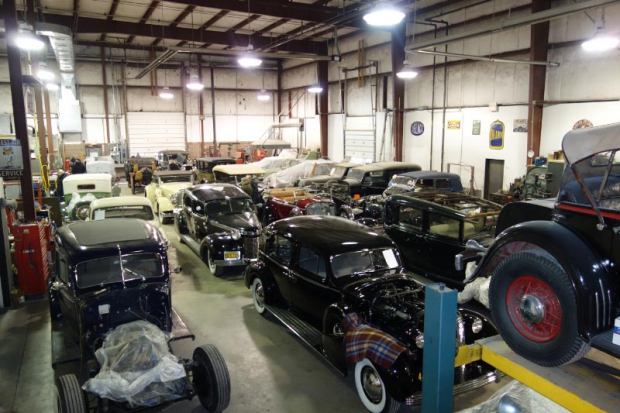
Last Saturday, members of the Long Island Sound Region of the Classic Car Club of America and the Long Island Buick Club were invited by Stephen Babinsky to tour his Automotive Restorations shop in Lebanon, New Jersey. As seen below, a wonderful time was had by all. Thanks Walt Gosden of the Long Island Sound Region for making the arrangements and Stephen Babinsky for your time and hospitality.
Enjoy,
Howard Kroplick
Automotive Restorations was profiled in the December 2012 issue of Hemmings Classic Car:
Stephen Babinsky
Local owners and Pebble Beach contenders alike call Automotive Restorations for the world's most exacting restorations
Words and photography by David Traver Adolphus
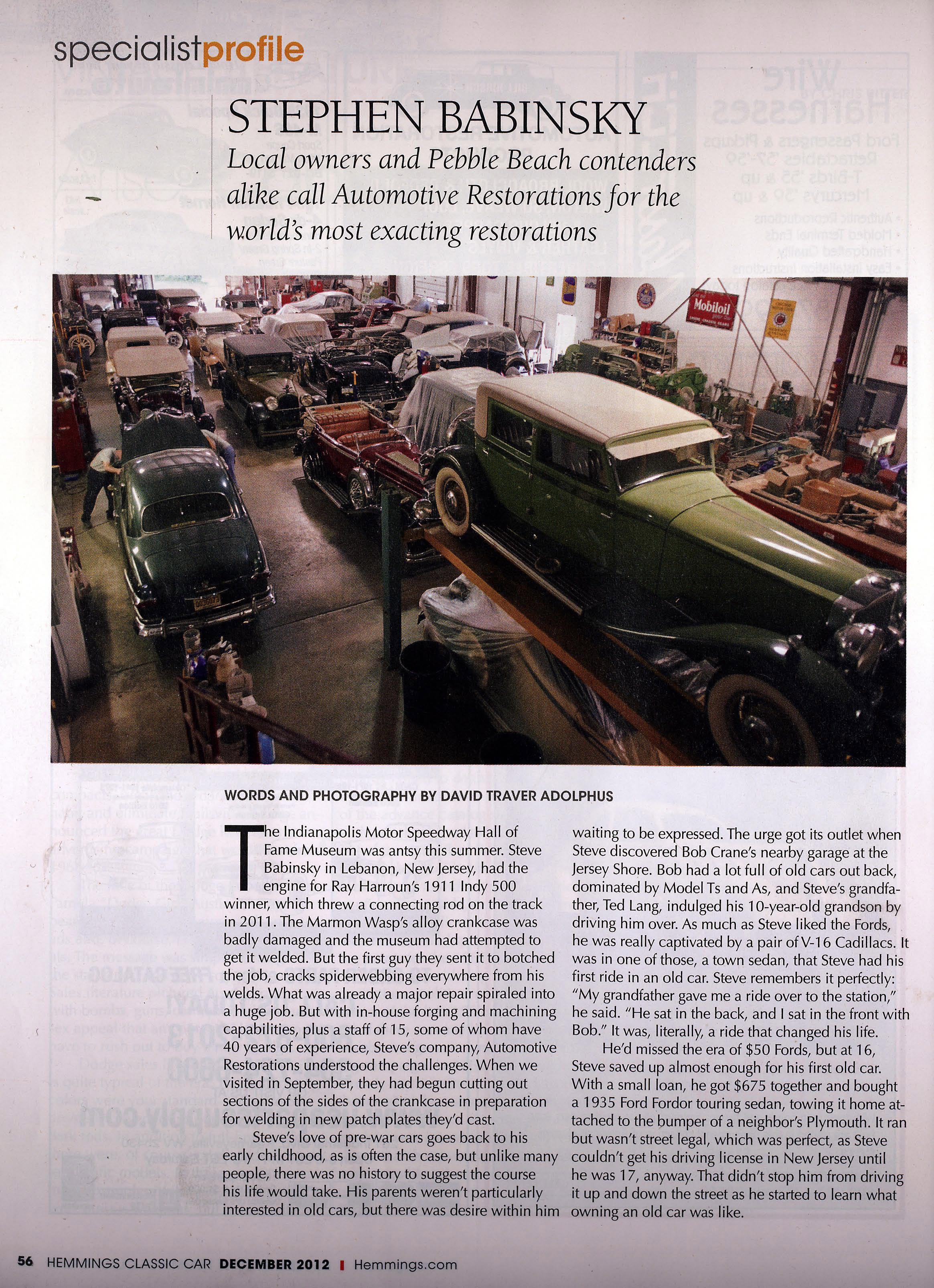 The Indianapolis Motor Speedway Hall of Fame Museum was antsy this summer. Steve Babinsky in Lebanon, New Jersey, had the engine for Ray Harroun's 1911 Indy 500 winner, which threw a connecting rod on the track in 2011. The Marmon Wasp's alloy crankcase was badly damaged and the museum had attempted to get it welded. But the first guy they sent it to botched the job, cracks spiderwebbing everywhere from his welds. What was already a major repair spiraled into a huge job. But with in-house forging and machining capabilities, plus a staff of 15, some of whom have 40 years of experience, Steve's company, Automotive Restorations understood the challenges. When we visited in September, they had begun cutting out sections of the sides of the crankcase in preparation for welding in new patch plates they'd cast.
The Indianapolis Motor Speedway Hall of Fame Museum was antsy this summer. Steve Babinsky in Lebanon, New Jersey, had the engine for Ray Harroun's 1911 Indy 500 winner, which threw a connecting rod on the track in 2011. The Marmon Wasp's alloy crankcase was badly damaged and the museum had attempted to get it welded. But the first guy they sent it to botched the job, cracks spiderwebbing everywhere from his welds. What was already a major repair spiraled into a huge job. But with in-house forging and machining capabilities, plus a staff of 15, some of whom have 40 years of experience, Steve's company, Automotive Restorations understood the challenges. When we visited in September, they had begun cutting out sections of the sides of the crankcase in preparation for welding in new patch plates they'd cast.
Steve's love of pre-war cars goes back to his early childhood, as is often the case, but unlike many people, there was no history to suggest the course his life would take. His parents weren't particularly interested in old cars, but there was desire within him waiting to be expressed. The urge got its outlet when Steve discovered Bob Crane's nearby garage at the Jersey Shore. Bob had a lot full of old cars out back, dominated by Model Ts and As, and Steve's grandfather, Ted Lang, indulged his 10-year-old grandson by driving him over.
As much as Steve liked the Fords, he was really captivated by a pair of V-16 Cadillacs. It was in one of those, a town sedan, that Steve had his first ride in an old car. Steve remembers it perfectly: "My grandfather gave me a ride over to the station," he said. "He sat in the back, and I sat in the front with Bob." It was, literally, a ride that changed his life.
He'd missed the era of $50 Fords, but at 16, Steve saved up almost enough for his first old car. With a small loan, he got $675 together and bought a 1935 Ford Fordor touring sedan, towing it home attached to the bumper of a neighbor's Plymouth. It ran but wasn't street legal, which was perfect, as Steve couldn't get his driving license in New Jersey until he was 17, anyway. That didn't stop him from driving it up and down the street as he started to learn what owning an old car was like.
The experience confirmed his desire to spend the rest of his life around old cars, so when he was in college and needed a job, he answered an advertisement for work at a machine shop. After a humiliating shop floor tour with an abusive foreman, he saw a huge, blown-up photo of a 1935 Ford Phaeton on the office wall. "I have one of those," he said, and when he'd convinced the foreman he wasn't lying, the owner came out. He was Herb Singe, a second-generation pre-war car collector and one of the biggest names in the hobby. They talked; Steve mentioned he was in the Early Ford V-8 Club and Herb hired him on the spot. Steve only worked there one summer, but made a lifelong friend in Herb and his family.
There was an unlikely but ultimately fortuitous detour after that. Steve's degree was actually a B.S. in Animal Science, and after college he went off to pursue his original plan of starting a dairy farm. He learned very quickly that farming was not what he wanted to do, and decided to go back to school. Once again, he needed a job, and this time landed with restorer Bob Gassaway in South Amboy, New Jersey. He stayed there through school and saved enough money to buy out Bob in 1981.
On the advice of a lawyer, Steve only bought the equipment, though--he didn't want any potential liability associated with buying the business, so while he had the tools, he had no customers. Actually, it's not quite true that he only bought Bob's physical assets: He rehired several of Bob's employees, and some of them are still working at Automotive Restorations today. "They've been with me almost all my life," he said. There's almost no employee turnover, which is good because Steve acknowledges the difficulty in finding competent mechanics and machinists today. When we noted that some of his people looked young, he conceded that sheetmetal specialist Nate is just 25 years old. He'd trained with Fay Butler and simply walked in the door looking for work. Then Steve introduced us to another employee, Mike, who Steve says can remember how to reassemble unlabeled parts he dismantled five years ago.
With a business but no clients, Steve began placing ads in Hemmings Motor News and elsewhere offering his services. It was a lean year or two before business started to pick up, but in 1983, their first Full Classic came through--a Packard, a marque with which they've been associated ever since. Steve hastens to say that Packard is far from the only car they do. "I don't want any Firebirds, Camaros or Mustangs," he says, but other than that, "I welcome all different cars," as long as they're pre-war. Brass Era vehicles and Full Classics are particular favorites, although we spotted two bullet-nose Studebaker Commanders outside; Steve admitted that these were his personal projects.
And those personal projects are quite something. One side bay of Automotive Restorations' 22,000-sq.ft. building holds Steve's personal cars. His first Full Classic is in there, a 1931 V-12 Cadillac he bought in 1981; in front is an incredible McFarlan roadster with the top end apart. Steve says that after the business day is done, he often keeps working at the shop until 10 or 11 at night, just because he loves old cars so much.
Another break came for the business in 1986 when he met collector Dr. Barbara Atwood. The famed Grand Dame of car collecting owned literally dozens of Full Classics, eight of which passed through Steve's shop for full restorations. Atwood's cars helped open many doors and build the nationwide clientele they have today. "I haven't advertised in years," said Steve, although their waiting list is "only" about a year.
Restorations account for the majority of man-hours in the shop, if not the majority of cars that come through. "We do lots of maintenance," said Steve. "I'd say we have a full mix of show cars and touring cars." A small subset of restorations consumes an inordinate amount of time, though: those destined for Pebble Beach. For 2012, Automotive Restorations spent the summer completing three cars for the Pebble Beach Concours, which is almost an all hands on deck proposition. "Other projects had to wait two or three months," he said, including the Marmon Wasp.
"All three cars were full restorations... Pebble Beach is my New Year's Eve," he said, meaning it's when his year begins and ends. Between a quarter and a third of the total time in the shop is spent preparing those few cars for Pebble (generally two or three cars). He has a regular crew that goes out, which included four people this year. "They know how a car should look," he said.
They know how other things should look, as well. Steve considers himself an accomplished researcher at this point, but every now and then, they see cars rare enough that there's no documentation. Plus, he says that almost everything they see has had major work done at some point since the Fifties, typically a restoration, usually requiring un-doing. "We see lots of jerry-rigged, incorrect stuff," he said, from backyard restorers who didn't have the ability--or access to information and materials--to do it properly. He says that manufacturers generally had access to the same resources, and certain techniques were used at specific times. So he can generally figure out which carburetor was originally used, or how a firewall was painted.
One new area for Steve is only tangentially car-related. He says a new, younger group of owners "aren't joiners." They don't belong to the AACA or CCCA and they sometimes take a great deal of convincing just to show their cars. "They're very private," he says, and describes an unknown collection of 200 cars that no one ever sees. "That's 200 people without one car [of their own]."
But he's in this for the long run: Still in his fifties, Steve has many more decades of work that he can't wait to get to, so he can be patient until the tide turns again. "It's philosophy plus the economy," he mused. "Money didn't go away during the Depression. There are some seriously big spenders right now." Just as the generation before them passed their cars and collections on, so will these people in their thirties and forties gradually either run out of interest or room; or as their children grow up, they will decide to start giving back to the hobby a little. "Besides, some big cars are still affordable," he says. "Some Model As are as expensive as some Full Classics."
After seeing the results of Automotive Restorations' work, we had no doubt they'd get the Marmon Wasp right, along with whatever other projects come in the door. "I would restore cars for fun if I didn't do it for a living," said Steve, before excusing himself to go pick up his tools and get back to work.
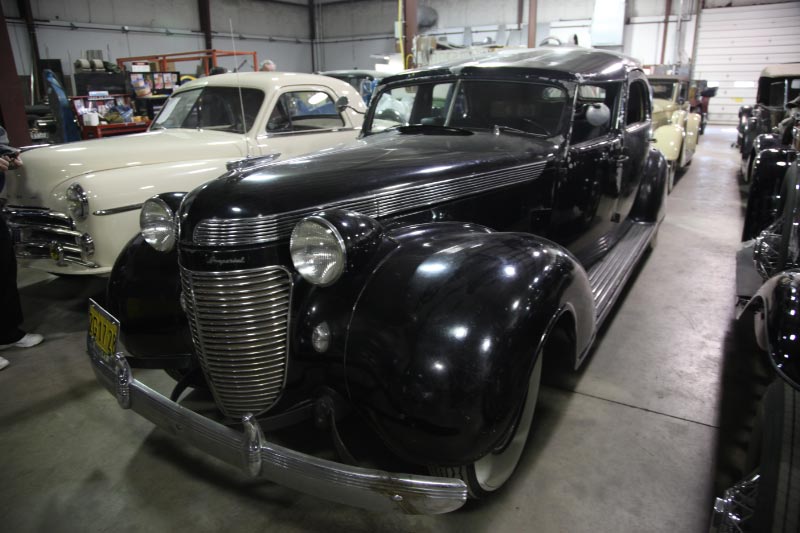
The 1937 Chrysler's Chrysler in its new winter home.
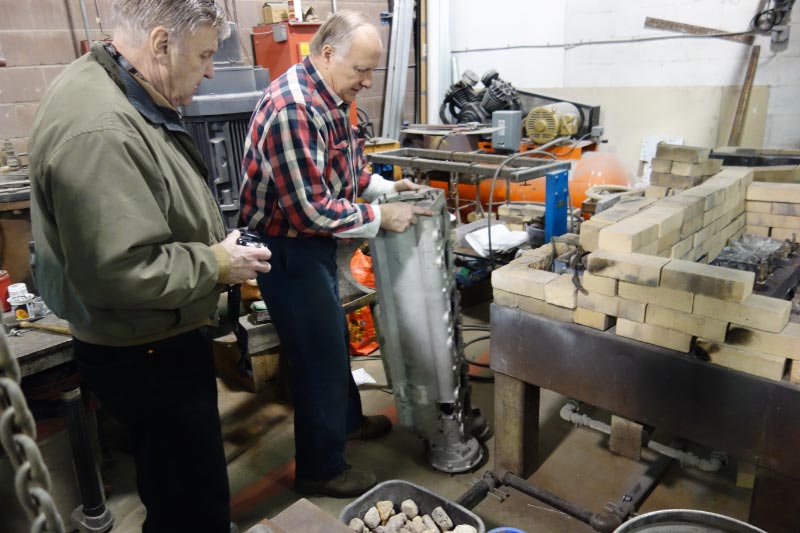
Steve Babinsky showing Walter McCarthy the partially-repaired crankcase from the 1911 Marmon Wasp that won the first Indy 500 Race.
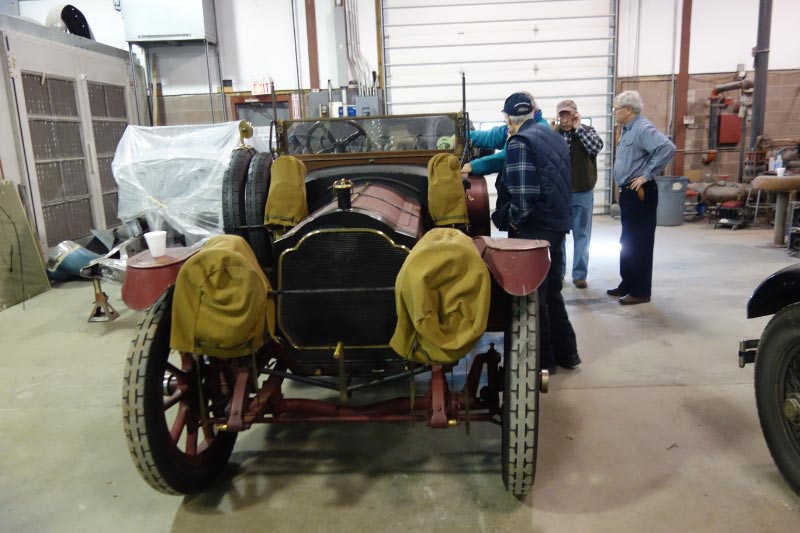
A 1910 Packard.
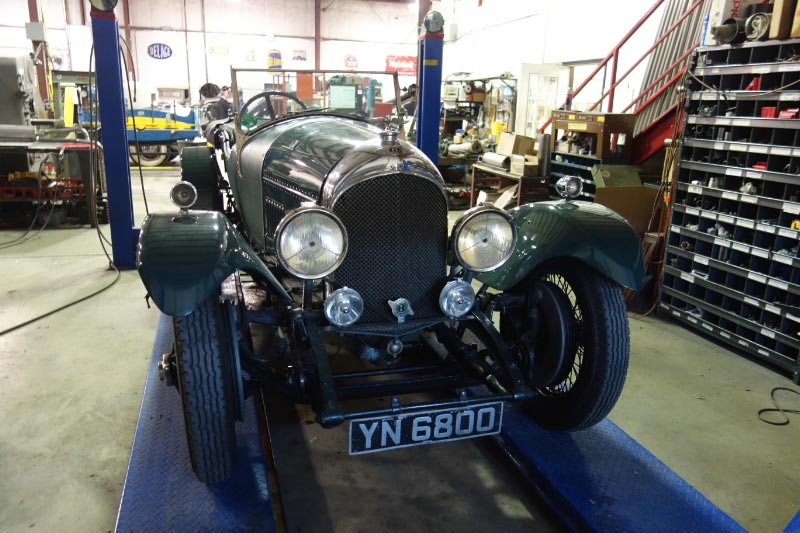
A beautiful Bentley.
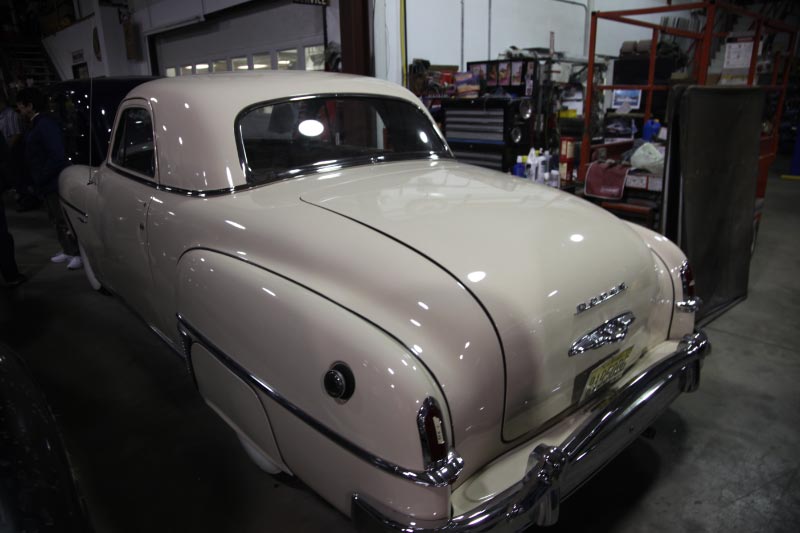
Check out the trunk in this classic Dodge.
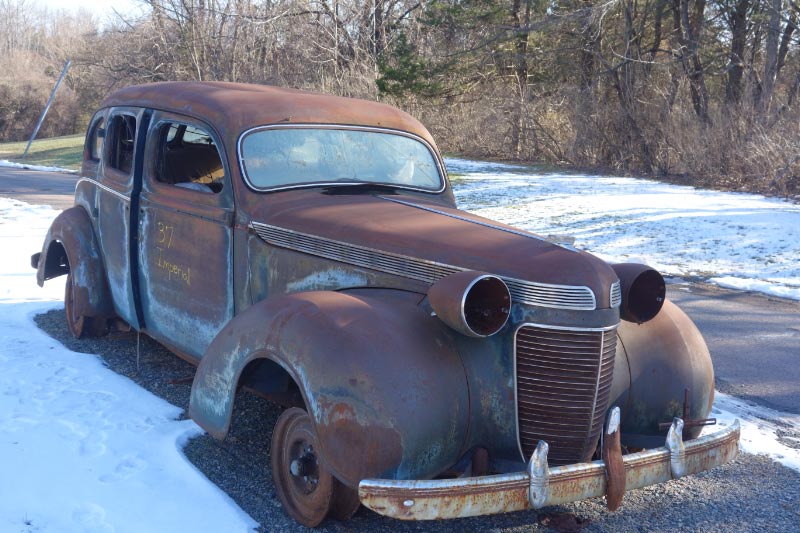
A parts car for the Chrysler's Chrysler!
More classic and vintage cars in the shop
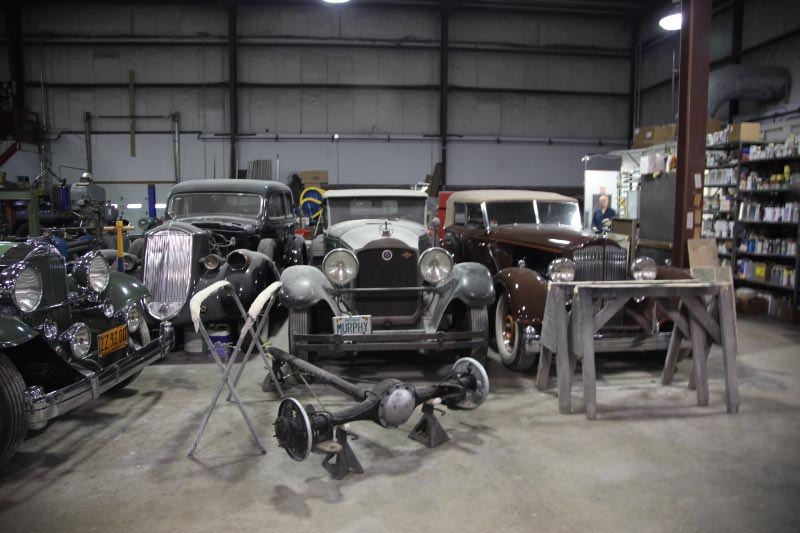


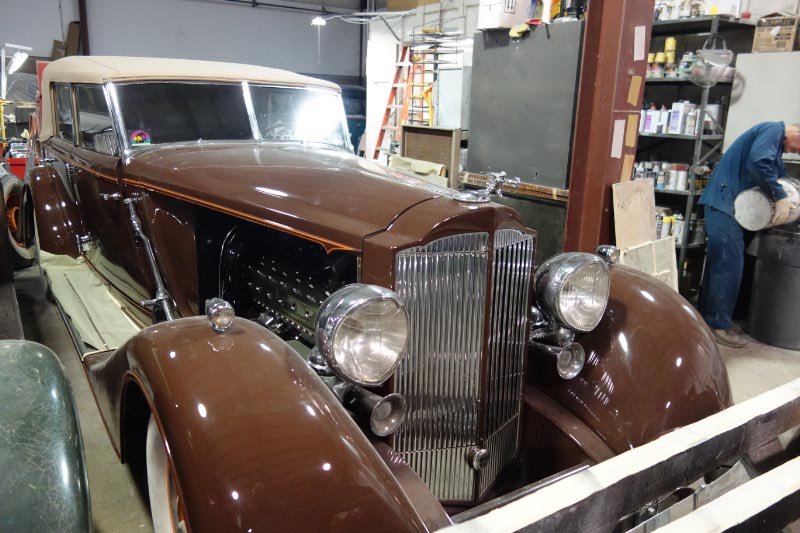
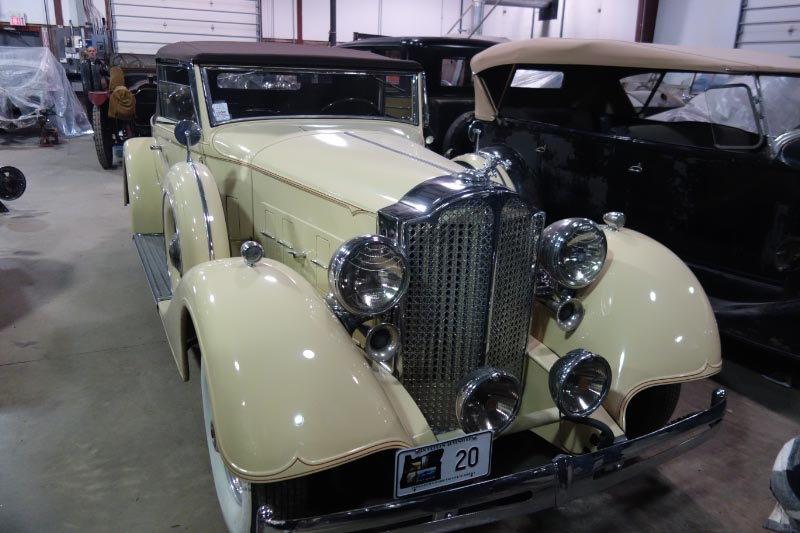



Comments
Now THAT’S what I call eye candy.
Roger
Nice article. Gather Walter’s shop will be doing the restoration of Chrysler’ Chrysler. Look forward to reading about the progress..